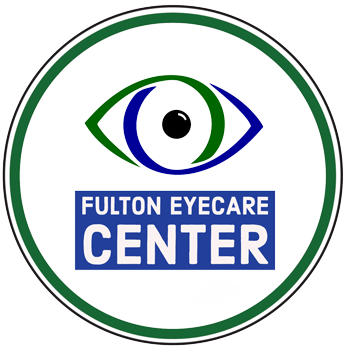
Have you read Part 1: What is Convergence Insufficiency?
Active treatment: A multi-site randomized clinical trial funded by the National Eye Institute has proven that the best treatment for convergence insufficiency is supervised vision therapy in a clinical office with home reinforcement (15 minutes of prescribed vision exercises done in the home five days per week). The scientific study showed that children responded quickly to this treatment protocol. 75% achieved either full correction of their convergence problems or they saw marked improvements within 12 weeks.
Passive treatment: Prismatic (prism) eyeglasses can be prescribed to decrease some of the symptoms. What are Prism Glasses - A special addition to normal lenses called prism can be put into an eyeglass prescription. Prism causes the images to be displaced so that a person with convergence insufficiency does not have to converge as much. This does not cure the condition but it does resolve many symptoms. The problem with prism is that some people can adapt to it. As a result, a higher amount of prism in following years must be prescribed to achieve the same effect. Although prism eyeglasses can relieve symptoms, they are not a "cure" and the patient typically remains dependent on the prism lenses. In addition, adaptation problems can lead to the need for stronger prescriptions in the future. Scientific research as well as optometric and ophthalmological textbooks agree that the primary treatment of convergence insufficiency should be vision therapy.
Pencil Push-ups: While a 2002 survey of ophthalmologists and optometrists indicated that home-based pencil-pushups therapy is the most common treatment, scientific research does not support this method. Studies done on pencil pushups have shown it to be ineffective in eliminating symptoms.

Taking if further...
The main treatment, the gold standard for treatment, of convergence insufficiency is vision therapy. Vision therapy uses various exercises to train the connection between the eyes and the brain as more than 50% of the brain is dedicated to visual function. For individuals with convergence insufficiency, therapy focuses on training the eyes to converge and eventually in the end stages to switch between convergence and divergence. Results from a study by the Convergence Insufficiency Treatment Trial Group suggests that office-based vision therapy is the most effective method for improving measures of convergence as well as patient symptoms. This is compared to home-based computer therapy and pencil push-ups (following a pencil as it is moved towards the nose). Other options such as prism lenses are only used when an individual is either unable to do vision therapy or is unsuccessful at it. Prism lenses alone are successful at mildly treating symptoms caused by convergence insufficiency in children and adults. Surgery is never considered due to the effectiveness of vision therapy. Further, pencil push-up exercises has been proven as ineffective and a primary treatment option.
How Long Does it Take to Treat Convergence Insufficiency? Can Convergence Insufficiency Come Back?
In general, 12-24 in-office vision therapy sessions are recommended to treat convergence insufficiency. This will vary based on compliance, the degree of convergence insufficiency (and other binocular disorders if present), age, and if there are any coexisting developmental disorders. With respect to regression following vision therapy, the Convergence Insufficiency Treatment Trial Group has found that 87.5% of children aged 9-13 were still considered either improved or successful one year after receiving treatment. Severe infection and/or traumatic brain injury later in life can create a new case of CI independent of a previous diagnosis of CI in their childhood.
What about adults with Convergence insufficiency?
The Convergence Insufficiency Treatment Trial Group found that for adults aged 19-30, 50% receiving office-based vision therapy for CI were either “improved” or “cured” after 12 weeks based on symptoms and clinical measures. It is possible that with more sessions there would have been a larger number of adults with CI benefitting from vision therapy. Also, investigators noted that the adults in this study improved the same amount clinically as children in another study suggesting that adults rate their symptomology differently than children.
Don’t underestimate ... the influence that a condition such as convergence insufficiency can have on a child's or young adult’s reading ability, concentration, comprehension, and education. If a child is acting out in class, it could be due to a vision problem such as convergence insufficiency. Parents should know that convergence insufficiency can cause numerous symptoms that make it difficult to read and comprehend. However, it is proven that office-based vision therapy with a trained therapist plus at-home therapy reinforcement can treat the condition and eliminate symptoms.
References: Arnoldi, K., & Reynolds, J.D. (2007). A Review of Convergence Insufficiency: What Are We Really Accomplishing with Exercises? American Orthoptic Journal, 57, pp. 123-130. Retrieved from http://aoj.uwpress.org/content/57/1/123.full.pdf
Cacho-Martinez, P. Garcia-Munoz, & A. Ruiz-Cantero, M.T. Do we really know the prevalence of accommodative and nonstrabismic binocular dysfunctions? Journal of Optometry, 3(4), pp. 185-197. Retreived from http://www.ncbi.nlm.nih.gov/pmc/articles/PMC3974377/pdf/main.pdf
Convergence Insufficiency Treatment Trial Investigator Group. (2009). A Randomized Clinical Trial of Treatments for Symptomatic Convergence Insufficiency in Children. Arch Ophthalmol, 126 (10), pp. 1336-1349. Retrieved from http://www.ncbi.nlm.nih.gov/pmc/articles/PMC2779032/pdf/nihms-148199.pdf
Convergence Insufficiency Treatment Trial Study Group. (2009). Long-Term Effectiveness of Treatments for Symptomatic Convergence Insufficiency in Children. Optom Vis Sci, 86 (9), pp. 1096-1103. Retrieved from http://www.ncbi.nlm.nih.gov/pmc/articles/PMC2780441/pdf/nihms153856.pdf
Cooper, J., & Jamal, N. (2012) Convergence Insufficiency—a major review. American Optometric Association. Retrieved from http://www.coopereyecare.com/studies/CI%20Major%20Review%20copy.pdf
Scheiman, M. & Wick, B. (2014). Clinical Management of Binocular Vision. Philadelphia: Lippincott Williams & Wilkins.
Scheiman et al. (2005). A Randomized Clinical Trial of Vision Therapy/Orthoptics versus Pencil Pushups for the Treatment of Convergence Insufficiency in Young Adults. Optometry and Vision Science, 82 (7), pp. E583-595. Retrieved from http://www.convergenceinsufficiency.net/uploads/citt_adult_pilot_study_manuscript_ovs_82_583-593.pdf

